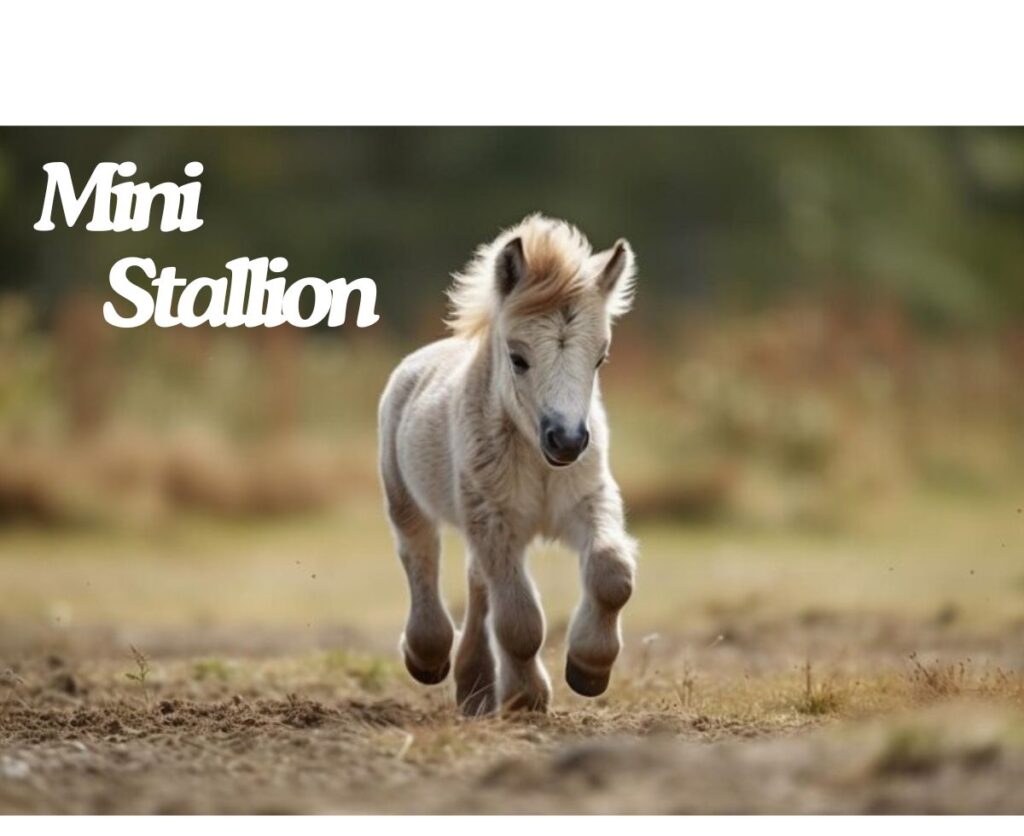Miniature horses, often referred to as mini stallions, are delightful and captivating creatures that have become increasingly popular as pets and companions. These small yet sturdy equines offer the charm and appeal of a full-sized horse in a compact size, making them suitable for various lifestyles. In this comprehensive guide, we will explore the history, characteristics, care requirements, and benefits of owning a mini stallion. By the end, you’ll have a thorough understanding of what it takes to welcome one of these enchanting animals into your life.
History and Origins
The Emergence of Miniature Horses
Miniature horses have a rich history that dates back several centuries. They were originally bred in Europe during the 17th century as pets for nobility and royalty. These small horses were highly valued for their beauty and companionship. Over time, their popularity spread to other parts of the world, including the United States, where they continue to captivate horse enthusiasts.
Breeding and Development
The selective breeding of miniature horses has been a meticulous process aimed at achieving specific characteristics. Breeders focused on producing horses that were small in stature while maintaining the conformation, intelligence, and temperament of full-sized horses. This careful breeding has resulted in the diverse and charming mini stallions we see today.
Characteristics of Mini Stallions
Physical Appearance
Mini stallions are known for their diminutive size, typically standing between 34 to 38 inches tall at the withers. Despite their small stature, they possess well-proportioned bodies, strong legs, and refined features. Their coats come in a variety of colors and patterns, adding to their visual appeal.
Temperament and Personality
One of the most endearing qualities of mini stallions is their friendly and gentle nature. These horses are known for their intelligence and eagerness to please, making them highly trainable and responsive to human interaction. They thrive on attention and enjoy being part of a family environment.
Caring for Your Mini Stallion
Housing and Environment
Providing a suitable living environment for your mini stallion is essential for their well-being. They require a safe and spacious area where they can move around freely. A well-constructed shelter, such as a barn or a sturdy shed, will protect them from harsh weather conditions. Additionally, ensure that their living space is clean and free from hazards.
Nutrition and Feeding
Proper nutrition is crucial for maintaining the health and vitality of your mini stallion. Their diet should consist of high-quality forage, such as hay or pasture grass, supplemented with a balanced feed formulated specifically for miniature horses. Fresh water should always be available to keep them hydrated.
Grooming and Maintenance
Regular grooming is essential to keep your mini stallion looking and feeling their best. Brushing their coat, trimming their hooves, and checking for any signs of illness or injury are important aspects of their care routine. Grooming sessions also provide an excellent opportunity for bonding with your horse.
Health and Veterinary Care
Routine veterinary care is vital to ensure the long-term health of your mini stallion. Regular check-ups, vaccinations, and dental care are essential components of their healthcare regimen. Additionally, be vigilant for any signs of illness or discomfort and seek prompt veterinary attention if needed.
Training and Activities
Basic Training
Training your mini stallion can be a rewarding experience for both you and your horse. Start with basic commands such as leading, haltering, and standing still. Positive reinforcement techniques, such as treats and praise, can help reinforce desired behaviors. Consistency and patience are key to successful training.
Fun Activities and Exercises
Mini stallions are highly versatile and can participate in a variety of activities. From driving and obstacle courses to agility training and even therapy work, there are numerous ways to keep your mini stallion engaged and active. These activities provide mental stimulation and help strengthen the bond between you and your horse.
Benefits of Owning a Mini Stallion
Companionship and Emotional Support
Mini stallions make wonderful companions and can provide emotional support to their owners. Their gentle and affectionate nature can bring joy and comfort, making them ideal pets for individuals of all ages. They are particularly beneficial for children, the elderly, and those with special needs.
Low Maintenance
Compared to full-sized horses, mini stallions require less space, food, and overall maintenance. Their smaller size makes them easier to handle and care for, making them a practical choice for those with limited resources or physical capabilities.
Versatility and Utility
Mini stallions are not just pets; they can also serve practical purposes. They can be trained for driving, pulling small carts, and participating in equine-assisted therapy programs. Their versatility makes them valuable assets in various settings.
Conclusion
Owning a mini stallion can be a deeply rewarding experience. These charming and intelligent animals offer a unique blend of companionship, versatility, and low maintenance, making them ideal pets for many people. By providing proper care, training, and love, you can enjoy a fulfilling and enriching relationship with your mini stallion.
FAQs
What is the lifespan of a mini stallion?
Mini stallions typically live between 25 to 35 years with proper care. Regular veterinary check-ups, a balanced diet, and a safe living environment contribute to their longevity.
Are mini stallions suitable for children?
Yes, mini stallions are known for their gentle and friendly nature, making them excellent companions for children. However, supervision and proper training are essential to ensure safe interactions.
How much space does a mini stallion need?
While mini stallions require less space than full-sized horses, they still need a safe and spacious area to move around. A well-fenced pasture or a large yard with a sturdy shelter is ideal.
Can mini stallions be trained for riding?
Mini stallions are too small to be ridden by adults, but they can be trained for driving, pulling small carts, and participating in various activities. Children may be able to ride them, but only under appropriate supervision and weight limits.
What is the cost of owning a mini stallion?
The cost of owning a mini stallion can vary depending on factors such as purchase price, housing, feed, veterinary care, and training. On average, the initial cost of purchasing a mini stallion ranges from $1,000 to $5,000, with ongoing monthly expenses for care and maintenance.







